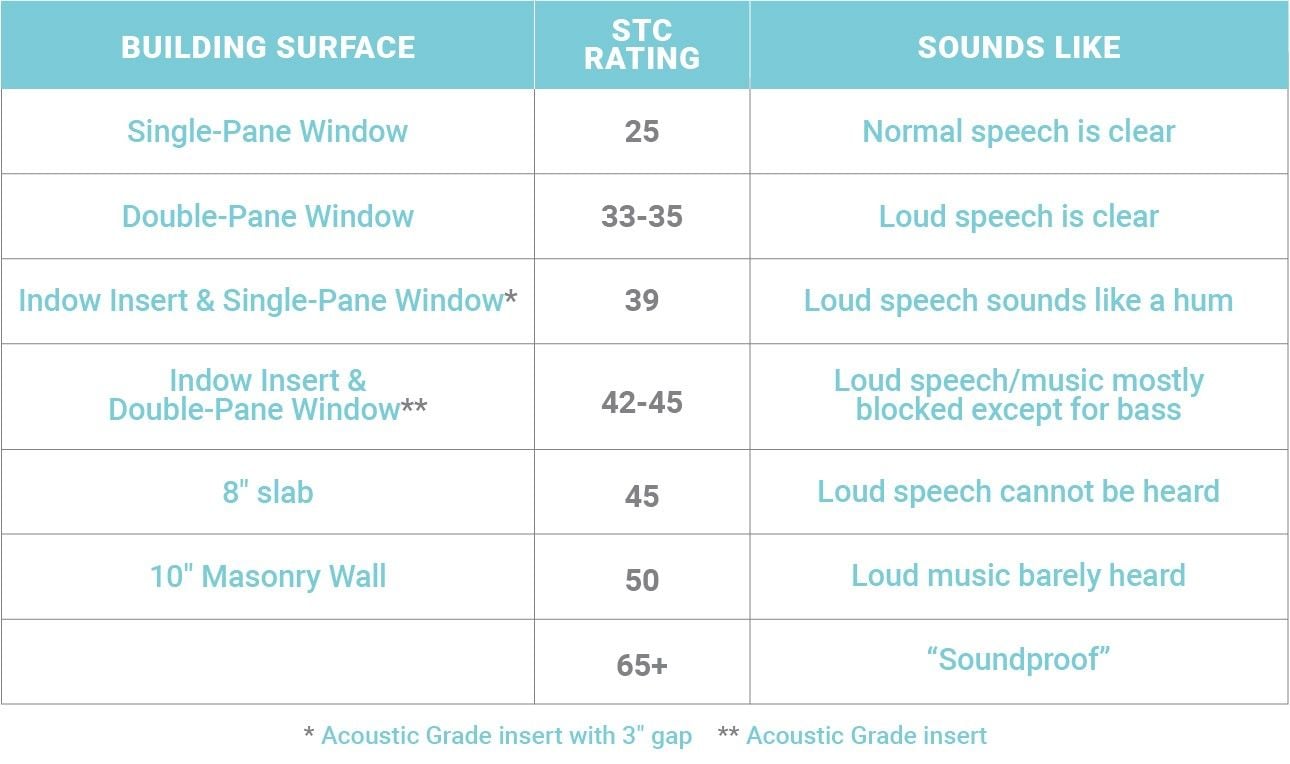
What You Should Know About Stc Ratings Chart
STC ratings are important to consider if you live in a noisy environment or are looking for a window to help create a peaceful and quiet home. Keep reading this post so you can learn about the stc ratings chart.
What are STC ratings?
STC (Sound Transmission Class) is a single-number rating system established by ASTM International (formerly American Society for Testing and Materials) to rate the sound-blocking performance of building materials and assemblies. The STC rating of a material or assembly is the weighted average of its sound reduction indices at 16 standard frequencies from 125 Hz to 4000 Hz. The STC scale is logarithmic, so each increase of 10 decibels (dB) in STC represents a ten-fold decrease in the amount of noise that can pass through the material.
STC is a good way to compare the sound-blocking performance of different materials, but it has some limitations. First, it is a laboratory measure that does not necessarily reflect real-world performance. Second, the STC scale is logarithmic, so two materials with adjacent STC ratings can have different sound-blocking properties. For example, a material with an STC of 30 blocks twice as much noise as a material with an STC of 25.
Many options are available if you are looking for ways to reduce noise in your home or office. Some common methods include installing sound-absorbing materials such as acoustic panels.
How are STC ratings determined with a chart?
STC stands for sound transmission class. It’s a measure of how well a material can block sound. The higher the STC rating, the better a material is at blocking sound. The STC rating of a material is determined by testing how well it can block sound in a laboratory. The results of these tests are then used to create a rating chart. The STC rating chart is a tool that can be used to compare the sound blocking abilities of different materials.
STC ratings of 38 to 42 are regarded as adequate for domestic soundproofing. Professional commercial soundproofing for recording studios has an STC rating of 50 to 65. These definitions and terminologies, which pertain to Sound Transmission Class, can assist in giving you a complete understanding of how sound is measured.
What are the benefits of using STC rating charts?
STC ratings are important for two main reasons. First, they provide a way to compare the noise reduction capabilities of different window and door assemblies. STC ratings can determine whether a window or door assembly will effectively reduce noise levels in a particular setting.
There are a few things to keep in mind when using STC ratings. First, STC ratings are only one factor when choosing a window or door assembly. Other factors, such as air leakage and the U-factor, can also affect noise reduction. You can apply these ratings to low-frequency sounds, such as those made by traffic or HVAC systems.
Overall, STC rating charts are a valuable tool for anyone looking to reduce noise levels in their home or office. By comparing the STC ratings of different window and door assemblies, you can find the best option for your needs.
Conclusion
Here we have told you about the STC rating. We hope you know how it helps to improve the sounds. There are a few different ways to find out more about STC ratings. One way is to look online for the stc rating chart. A few different websites, such as Intertek, offer information about STC ratings.



